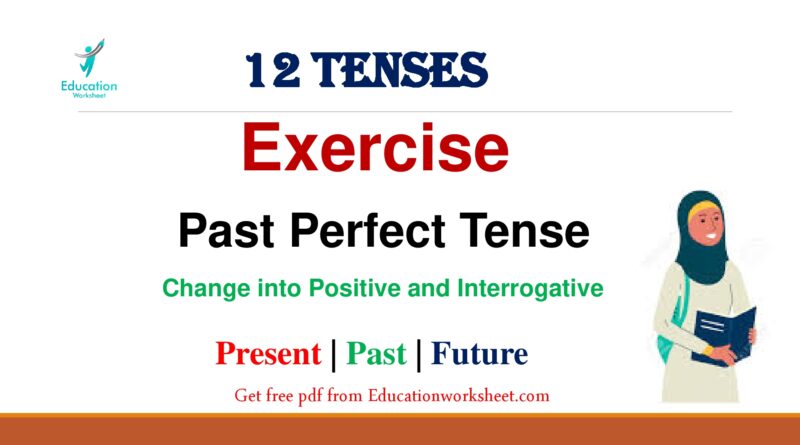Past Perfect Tense affirmative examples worksheets
Past Perfect Tense affirmative examples
Here are some examples of Past Perfect Tense in affirmative sentences to help you understand its usage:
I had finished my homework before dinner. In this sentence, the action of finishing homework (past perfect) occurred before the action of having dinner (past simple).
She had already left when I arrived at the party. Here, the action of leaving (past perfect) happened prior to the action of arriving at the party (past simple).
They had bought their tickets before the show started. The purchase of tickets (past perfect) took place before the commencement of the show (past simple).
Past Perfect Tense affirmative examples worksheets

By the time we reached the station, the train had departed. The train’s departure (past perfect) preceded our arrival at the station (past simple).
He had studied all night for the exam, so he felt well-prepared. The act of studying (past perfect) occurred before the feeling of preparedness (past simple).
The chef had already prepared the ingredients when the guests arrived. The preparation of ingredients (past perfect) took place prior to the arrival of the guests (past simple).
Past Perfect Tense affirmative examples worksheets

Before the storm hit, we had secured all the windows and doors. The securing of windows and doors (past perfect) happened before the onset of the storm (past simple).
The project had been completed by the time the client reviewed it. The project’s completion (past perfect) preceded the client’s review (past simple).
They had known each other for years before they got married. Their acquaintance (past perfect) existed prior to their marriage (past simple).
After I had watched the movie, I went to bed. Watching the movie (past perfect) occurred before going to bed (past simple).
Past Perfect Tense affirmative examples worksheets

The Past Perfect Tense is a valuable tool in English grammar, allowing us to clearly establish the sequence of events in the past. It is particularly useful for narrating stories, explaining cause-and-effect relationships, and providing context for past actions. By using “had” and the past participle, it helps us communicate the idea that something happened before a specific point in the past, adding depth and clarity to our descriptions and narratives.

